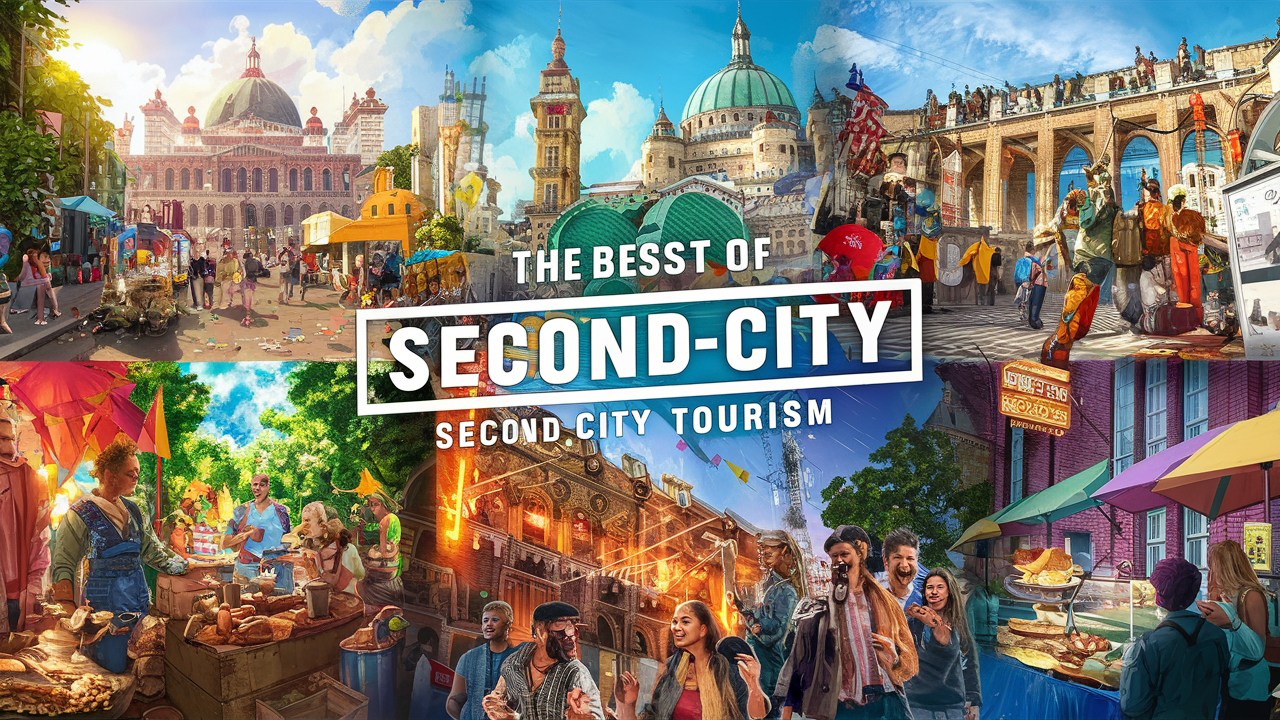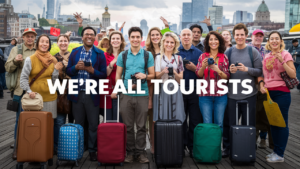Traveling to popular tourist hot spots around the world has become increasingly challenging in recent years due to overtourism. Cities like Venice, Italy and Barcelona, Spain attract millions of visitors annually, putting immense strain on local infrastructure, communities, and the environment.
However, there is an exciting travel trend that provides a solution – second city tourism.
Second city tourism involves purposefully traveling to the lesser-known cities and regions within a country, rather than only visiting the main tourist hubs. This allows travelers to have a more authentic cultural experience while also reducing the negative impacts of overtourism in crowded destinations.
In this post, we will explore what second city tourism is, its benefits, and tips for how to become a second city traveler on your next trip.
What is Second City Tourism?

Second city tourism is a form of travel that involves bypassing major tourist destinations and instead visiting their secondary or even tertiary cities and towns. The term “second city” travel comes from a city that is the second most populous in a country, though now it more broadly refers to any destinations beyond the primary tourist hubs.
This trend has emerged in recent years as a conscious and sustainable way to travel. It provides an avenue to spread tourist dollars to less discovered parts of a country and reduce the burden of overtourism on popular destinations.
For example, instead of solely visiting Paris on a trip to France, a second city traveler may choose to also spend time in Nantes, Montpellier, Nice, or Bordeaux to experience more of France’s cultural tapestry.
How Second City Tourism Helps Curb Overtourism
Second city tourism helps address the problem of overtourism – when locations become too crowded with tourists and their capacity to handle visitors becomes strained. This leads to problems like:

- Environmental damage
- Increased living costs for locals
- Overcrowding and degradation of cultural sites
- Disruption to local ways of life
By traveling to alternative destinations, tourists inherently reduce the pressure on heavily visited locations. Spreading tourism also has economic benefits, allowing revenue to be distributed to developing tourism markets.
For popular cities already facing overtourism issues, second city travel is a key part of working towards sustainable tourism.
5 Benefits of Being a Second City Traveler
Embracing second city travel provides advantages both for the traveler themselves and the destinations they visit:
1. Avoid Overtourism and Crowds
Second city destinations are less crowded, providing a more pleasant experience without tourist crowds. This enables a deeper experience of local culture.
2. Discover Hidden Gems
Lesser-known destinations often have underrated attractions that delight travelers, from stunning nature to historic sites. You may uncover your new favorite place!
3. More Authentic Experiences
With fewer tourists, second city travel allows for more interaction with locals and an inside look at regional life. The traditional tourism scene is less developed.
4. Boost Local Economies
Your tourism dollars make a bigger direct impact on small communities versus already prosperous major cities. You’re supporting their local development.
5. Better Travel Budgeting
Second city travel is often more affordable, allowing your budget to stretch further. Less tourist infrastructure means lower prices.
How to Become a Second City Traveler
Adopting a second city approach to travel is straightforward. With proper planning, you can seamlessly make second city tourism part of your next trip itinerary.
Follow these tips:
Research Upcoming Destinations
Identify the popular tourism hotspots you plan to visit, then research second city options nearby or within that country/region.
Look to Nature, Coastlines, and Smaller Towns
Areas of natural beauty, smaller towns, and coastlines tend to be beyond major city hubs and make excellent second city locations.
Talk to Locals
People that live in the country will have the best second city recommendations away from the tourist track. Reach out on travel forums.
Add Buffer Days
Plan sufficient time in your itinerary to travel between your main destinations and second cities. Slow travel allows fuller immersion.
Use Public Transport for Flexibility
Buses, trains, and other public transit make exploring second cities seamless without the need for a car.
Top Second City Destinations Around the World
To spark some second city travel inspiration for your next trip, here are some of the world’s best second cities to visit:
Western Europe
- Bruges, Belgium (near Brussels)
- Ghent, Belgium (near Brussels)
- San Sebastian, Spain (near Barcelona)
- Sintra, Portugal (near Lisbon)
Eastern/Central Europe
- Gdansk, Poland (near Warsaw)
- Ljubljana, Slovenia (near Venice)
- Pécs, Hungary (near Budapest)
Asia
- Chiang Mai, Thailand (near Bangkok)
- Kyoto, Japan (near Tokyo)
- Georgetown, Malaysia (near Kuala Lumpur)
Australia/New Zealand
- Newcastle, Australia (near Sydney)
- Rotorua, New Zealand (near Auckland)
South America
- Valparaiso, Chile (near Santiago)
- Medellin, Colombia (near Bogota)
Start Slow With Day Trips
If venturing further afield seems daunting, start small by taking day trips from main cities into the surrounding region. This allows a taste of second city travel while basing yourself in better-known hubs.
Most large cities have smaller towns, nature, historic sites, and unique neighborhoods worth exploring just a short journey away. Get a feel for local transportation and navigating less touristy areas before a longer second city trip.
Second City Travel is the Future of Sustainable Tourism
Avoiding the traditional tourism hotspots in favor of lesser-known second cities allows travelers to reduce their environmental footprint and overtourism impact while getting unique experiences off the beaten path.
As overtourism challenges become more pressing, second city travel is a solution that benefits both travelers and destinations by spreading the impact.
By taking the road less traveled, second city travelers pave the way for a more mindful and sustainable future of travel. Rediscover the joy of exploration and make your next adventure a second city one.
What are your thoughts on second city travel? Share your questions and experiences below!
FAQs
What is second city tourism?
Traveling to lesser-known cities and regions in a country rather than only going to the main tourist hubs.
How does second city tourism help with overtourism?
Spreads tourists to alternative destinations to take pressure off overcrowded hotspots.
What are the benefits of second city tourism?
Avoid crowds, discover hidden gems, more authentic experiences, boost local economies, better budget.
How do I plan a second city trip?
Research lesser-known options near your destinations, look at nature/coastal areas/small towns, ask locals for tips.
What are some examples of second cities?
Bruges instead of Brussels, Gdansk instead of Warsaw, Chiang Mai instead of Bangkok.























